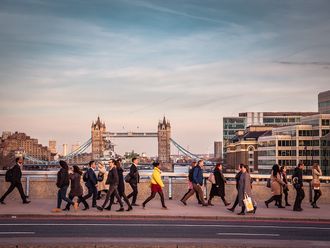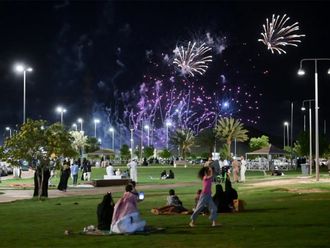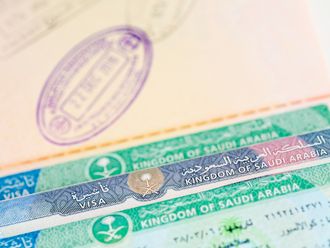Despite the best efforts of the Vikings, who chose its inviting name to hoodwink prospective settlers, no one expects Greenland to be lushly hospitable. Its bleak magnificence had been laid out beneath my plane window for half the morning: a frosted, monochrome enormity of granite and glaciers two-thirds the size of India, fringed with slightly more inhabitants than Hereford.
All the same, stepping out into the still, bright morning at Kangerlussuaq airport, the brutal reality of life at minus 40 degrees Celsius came as a shock. My nostrils crinkled as everything up them instantly froze. Then I breathed in, and Dracula punched me in the throat.
I’d come to try a bold twin experiment by Greenland’s tourist authorities. First, a new season for holidaymakers: the flesh-shattering depths of winter. February and March are the cruellest months in the Arctic and almost all visitors to Greenland currently come in summer, when you only need one pair of gloves. Second, a new destination for the adventurous gourmet. Copenhagen’s Noma has become one of the world’s most-feted restaurant (and ranked the very best for the last three years) with its freestyle riffs on Nordic cuisine. Denmark’s former colony now finds itself in the gastronomic halo, a challenge for native chefs even in the south of the country, where the Vikings’ bucolic brand name seems least outrageous they’ve got trees and everything. I’d come to the barren and permafrosted mid north-west, which must surely rank as the foodie’s final frontier.
My base was Ilulissat, a town of 4,000 people and 2,500 sled dogs, situated, like every other settlement in Greenland, on the coast. It’s a plucky, cheerful place with brightly coloured houses warming up the deep-frozen landscape, and a harbour becomingly strewn with little boats in ice-locked hibernation.
Both the hotels I stayed in were spanking new and devoid of traditional local character wisely so, as a turf roof and fish-oil heating isn’t likely to bag too many stars on TripAdvisor. What they did have were some tirelessly dumbfounding vistas. Ilulissat means “the icebergs” in Greenlandic, and what a sight they were through the treble-glazing: sometimes a fleet of Tolkienesque dreadnoughts, sometimes a Henry Moore retrospective on the run, lined up on a massive iced horizon thickly buttered with sunset, or picked out by a full moon and the free-form green swooshes of the northern lights. The Greenlandic winter landscape is under a fairytale curse: its serene, shimmering majesty tempts you outside, then snaps your flash-frozen soul in half.
Almost everyone in Ilulissat works in fishing, most of them at factories that process prawns and halibut for export to Denmark. Semi-independent Greenland is stumbling through a slow-motion divorce from its one-time overlord: Copenhagen still pays an annual subsidy and takes charge of foreign and financial policy but Inuit Greenlandic is now the sole official language, and the old Danish place names have been replaced. With its halting, sibilant clucks, Greenlandic is not an accessible tongue, though neither, as we’ve learnt from the strangled gurgles of many imported TV dramas, is Danish. The half-Greenlandic guide who showed me round what was once Jakubshavn said that her young son spoke better English than Danish. (She also told me that he once got frostbite on her 20-minute walk to school.)
Reclaiming Greenland’s national identity, insists champion chef Inunnguaq Hegelund, also means reclaiming its national cuisine. No easy task in a land where what passes for fertile soil is 500 years old.
“Well, it’s amazing what you can do with angelica,” he told me in his aunt’s kitchen, bigging up one of the few plants that prospers here. (In the days ahead I found that what you can mainly do is make everything taste faintly of fennel and rhubarb.)
Hegelund is an engagingly self-assured 24-year-old, who isn’t entering the national catering finals this year “to give someone else a chance”. His repertoire at Ilulissat’s Hotel Arctic is inevitably fish-centric, but the splendid meal he created for us at his aunt’s was a tribute to Greenland’s unsung, land-based fauna. I didn’t imagine that sheep could survive in Greenland. The one I ate bits of obviously hadn’t, but it was beautifully succulent. I’d never even heard of muskox, which despite its name and the beefy rareness of its meat, is a massively furry goat. Hegelund set it off with a rich sauce made from crowberries, which ripen in tiny black hillside clusters during Greenland’s nightless summers. I was told that Greenlandic culture remains rooted in the kill-everything-and-eat-it tradition of the macho outdoorsman but Hegelund trained in Denmark, and attuned to European sensibilities understands that the typical gourmet tourist is unlikely to appreciate the marine-mammal aspect of this tradition. If the search for offshore oil continues to disappoint, tourism revenue may prove crucial for Greenland’s independence, and people who go there want to watch whales, not eat them. And it isn’t just the ethics that might leave a bad taste for visitors: when Itried seal a few days later, it proved stubbornly unmoreish: dark, tough, fishy meat that tastes like the smell of 1970s cat food.
The morals of seal hunting may deter some tourists from visiting but the clothing it yields is about practicality. My two-day dog-sledding trip simply would not have happened without my thermal sealskin anorak and salopettes, outermost of five layers of clothing. Without the matching mittens, and two pairs of under-gloves, I’d be typing this with my nose.
I’ve been dog sledding before, in Lapland with two of my children a few years ago. Then I took charge of my own sled, or tried to, clinging on to the waist-high bar like a man being dragged down the Cresta Run on a Zimmer frame. This time, there were many more dogs: 16 huskies instead of four, a tangled dog’s cradle of yapping jostles. Plus, I was a passenger, sitting with only the ropes that attached the luggage beneath me to hold on to. My driver, Hans, was invigoratingly old-school. Frost speckled his sparse beard, and his legs were sheathed in a voluminous pair of polar-bear-fur trousers.
The following three hours offered an immersive experience of Greenland’s hardcore winter wilderness. We swished across frigid lakes at the rear of an eight-sled canine convoy, the whiff of musky poo forcing its way up my nostrils through a bandit-scarf and two balaclavas. My face-holes began to leak fluids that soon solidified in the fabric that sheathed them. This grim carapace froze to my nose; then, after some ill-advised poking, to my tongue. My eyelids periodically bonded.
When I got off to help push us up, everything instantly defrosted into steamy sweat. The process was promptly reversed when we barrelled down the snow-marbled granite on the other side. With the brilliant sun nosing into another golden goodbye our convoy reached a pair of cosy huts. Then sped right past them and out onto the frozen fjord behind.
Hans and his friends were out here, in the ultra-remote, super-hostile middle of frozen nowhere, to go fishing. Some of them were already at it, winching up a long, many-hooked line through a hole in the half-metre ice. Hans told me it had been minus 55 degrees Celsius out on the ice the week before. If the conditions were inhuman, then so was the alien panorama: a yawning white flatness girdled by heavy, lifeless mountains. The men at work might more convincingly have been prospecting for rare elements near the pole of Mars.
As it was, the first of a succession of huge halibut emerged from the hole, each waist-high to the men who unhooked them. When the time came to cut them up into chunks they were frozen rigid, though the smell of solid blood was enough to set the dogs off into a wolverine chorus.
The huts, when we made it back to them, seemed as warm and welcoming as a village pub on Boxing Day, though by the time our fresh-off-the-sled halibut soup hit the boil, the water in my bottle still wasn’t moving.
I was too tired to care. The simple act of generating body heat all day had exhausted me: sitting on your bottom is hard work when it is frozen. I rolled out a billion-tog sleeping bag on the floor and slept right through an apparently epic twin display of northern lights and snoring. We sledded back to Ilulissat and spent the following days in ever-smaller and more-remote settlements.
I took a helicopter over the fractured ice sheet to Disko Island, a Danish name that probably hasn’t survived just so that I could send funny text messages, but because the native variant is Qeqertarsuaq. Eight hundred people live in the only significant town, another kaleidoscopic huddle of warm houses and frozen boats. Backed by long, flat-topped mountains, it looked like rural Iceland with a broken boiler. Everyone kept telling me that Disko was a sea of green in the summer, “though we know it’s hard to believe”.
Greenland’s cultural collisions smashed out everywhere. Skinned seals were strung up from porches topped with satellite dishes. A hunter dragged a big, white arctic hare past anew supermarket full of Pringles and tortellini. Children in Manchester United shirts played three-and-in at a football net half-buried in iced snow. I had the finest meal of my trip plump, moist, reindeer steak with crowberries prepared by a Greenlandic cook who boasted that the only time he ever went outdoors was to smoke. The menu at Arthur, Disko’s solitary restaurant, is winningly dependent on what this man can get his hands on: a fisherman had just turned up at the kitchen door with wolf-fish and a salesman’s smile. When my helicopter out of Disko was delayed by a blizzard, the chef put together an impromptu muskox chilli.
I was taken out to a headland on the edge of town by Outi and Mads Tervo, husband and wife researchers at Disko’s venerable Arctic station. They’re studying the song of the bowhead whale, a huge and mysterious animal that suffered more than most in the bad old days: during the 1850s, four bowheads were being slaughtered every day. Mads opened a hatch in a squat little lighthouse and handed me a headset connected to a distant array of submerged microphones. Whale song is a soaring, groaning electronic chorus. Its purpose is still hazy, but the Tervos have established that the anthem, mimicked identically by every bowhead, is different each year.
Not bad going when you learn how many tunes some of them have to remember: recent autopsies have found evidence in the form of ancient ivory harpoon tips embedded deep in their blubber which suggests that bowheads can live for more than 200 years, longer than any other mammal. One which died during US president Bill Clinton’s term of office survived a harpoon attack when Thomas Jefferson was president. It felt portentous when Outi pointed to sea, and in a distant patch of open water between the toothpaste-blue bergs, I saw two great black crescents rise and fall.
The final trip out of Ilulissat was an hour-long jaunt for my snowmobile driver, and an ordeal of Scott-grade folly for me. Snowmobiles go much faster than dogs, so passengers get much colder. My goggles were impenetrably ice-rimed before we’d even left town. When I sensed the terrain begin to undulate I curled both arms round my driver’s tangibly reluctant torso, but numbness soon slackened my grip.
Blind, spent and mired in frozen mucus, by the time we arrived in Oqaatsut (formerly known as Rodebay) I didn’t feel my life was worth saving. When I fumbled off my goggles my driver squinted at my central brow with some concern, then prodded it with an appraising thumb. “Souvenir of Greenland,” he grunted: a crusty red bindi of first-degree frostbite.
I thawed out over a lavish marine buffet in a guesthouse run by a German couple. Wind-dried halibut, breaded capelin, deep-fried cod roe as long as you forgot to eat the latter, everything was rewardingly weird and wonderful. I’d learned that even in Greenland’s most unpromisingly desolate extremities running water in Oqaatsut means a lump of melting iceberg in a tank you will eat well. Perhaps especially well, with the nearest breakfast pop tart on the other side of two mountains and a frozen fjord.
Afterwards, I went out to explore with Ole Dorph, town elder and de-facto mayor. Home to 46 people, Oqaatsut in deepest winter had the thrilling air of mankind’s last stand. Big icebergs came right up to the door. Sled dogs howled beneath racks of wizened fish left out to dry. A fair few of the far-flung scatter of houses were abandoned, their frost-bleached furnishings picked out by the late sun coming in through cracked windows.
Dorph told me that his town had been dying since its fish-processing plant closed in 2000. Oqaatsut, or more properly Oqaatsut, had begun life in the 18th century as a Dutch whaling station. He pointed out the original barrel-making cooperage, still apparently in use. “We have a little tourism,” he said, “but most of us must take our living from the sea.”
And with that he led me into a warehouse by the frigid shoreline. At the back stood a large, cold store, which exhaled a pungent fog when Dorph opened its heavy door. Inside, his deep-frozen dream for Oqaatsut’s future lay piled up around us in thousands of vacuum-sealed sachets.
When the fish plant closed, Dorph set up a local co-operative and after many years of lobbying was awarded the right, under an “aboriginal subsistence” exemption, to kill and process a bowhead whale. The necessary investment almost crippled the tiny town, and things got worse when the grim work was done. In the 40 years since Greenland landed its last bowhead, people had lost their taste for its very blubbery meat. The supermarkets wouldn’t take it. Nor would local fishmarkets. As Dorph discovered, even the people of Oqaatsut didn’t want to eat the stuff, and two years on are now feeding it to their dogs.
I didn’t know what to say, or what to think. This big fridge full of plastic bags was the final resting place of a mighty, majestic creature, the end of a life that might, just, have begun before Queen Victoria’s. The people who lived here had, in the final analysis, slaughtered it for no reason, but I still felt for them. And with their nation’s independence in some curious way beholden to ethically minded, foodie-centric extreme tourism, you have to believe that Oqaatsut’s short-term loss is this truly astonishing country’s long-term gain.
Guardian News and Media Ltd












